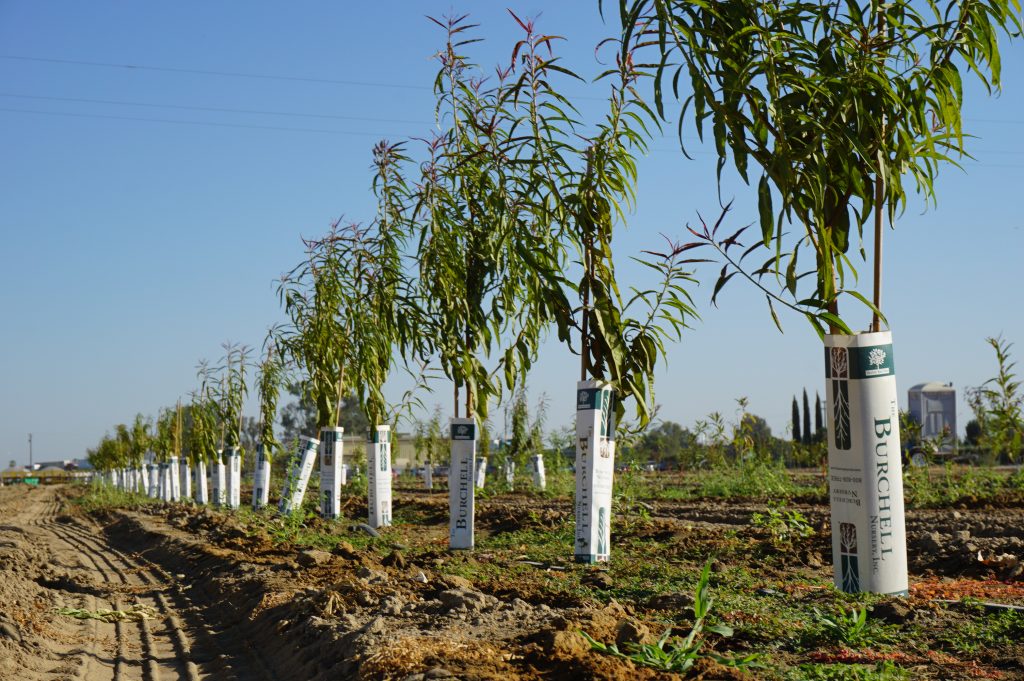
It’s rare to find an agriculture nursery that also breeds and researches variety and rootstock combinations. A longtime Central Valley nursery does just that, focusing on optimizing production.
Most growers are familiar with Burchell Nursery, located in Fresno County. Product development and plant breeder John Slaughter said his company takes many things into consideration with its trials at the nursery. “My grandfather was an extension, my father was an extension and there is a lot of that in me. What we are really hoping to do is to create fruit varieties, almond varieties and rootstocks that are positive influences in the industry for quality and production,” Slaughter said. “Also we are trying to work out some of the agronomic benefits with it not being just this rootstock, but it’s this variety with this rootstock with this planting and this water regime. We are trying to basically work on optimizing production because it’s not just genetics. It’s a system approach.”
Slaughter said his company travels the world to see what methods growers in other countries are using, what’s working, and what’s not. “We think of California as the fount of information and the mecca of what is going on in the almond industry and a lot of that is historically true, generally,” Slaughter said. “But, for instance, when we go to Australia to see what they are doing and try to learn from them with regard to pulse irrigation, water use and fertigation, in many cases these other countries are ahead of us for various reasons. It’s helpful to learn from them and then bring back what we think will be positive and adapting that to commercial settings here.”
Slaughter added there is a benefit to being a nursery that does research. “What’s fun is that being a nursery, we have an incredible amount of varietals and rootstocks that we can grow ourselves and test here at our facility, try to work out the bugs, find all the problems and opportunities that might exist in some of these combinations,” Slaughter said. “We look at things like irrigation regimes, water use, influence of rootstock on precocity and branching. Those are things we can do here that probably not a lot of other nurseries can do, having this access and translation across the board between genetics and tree propagation or tree factory if you will.”
Stay with AgNet West for more about the trials and focus of research at the nursery.










